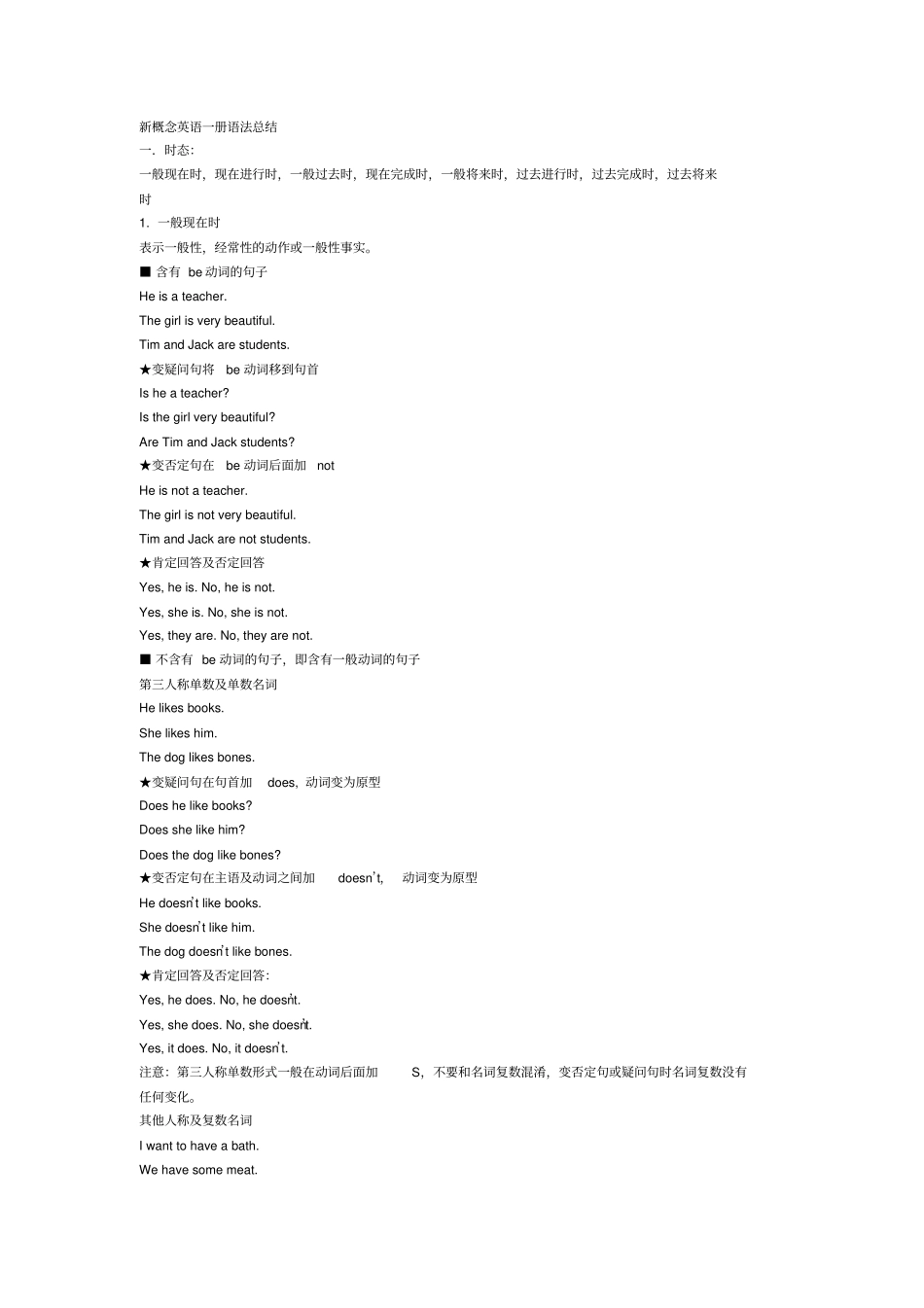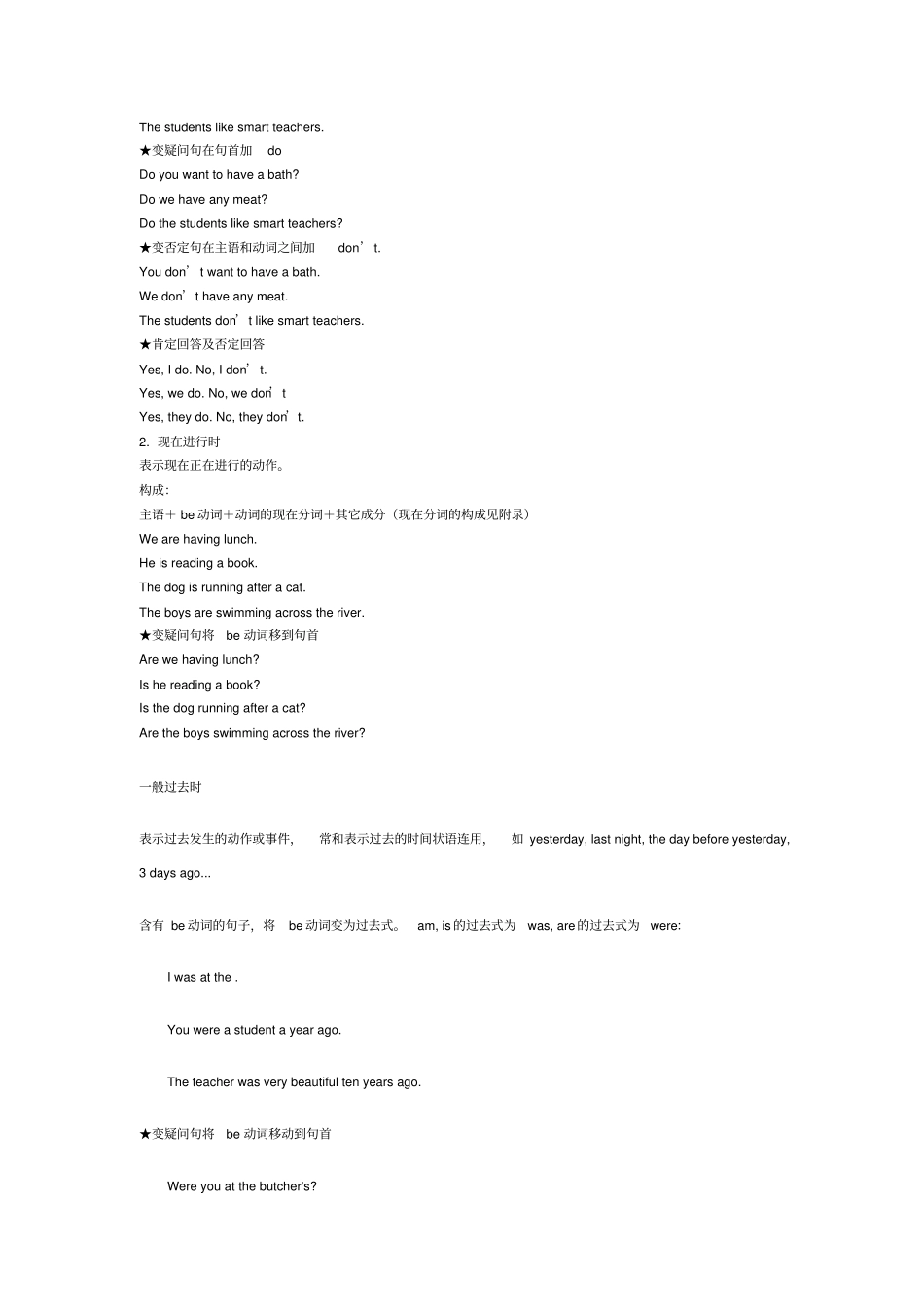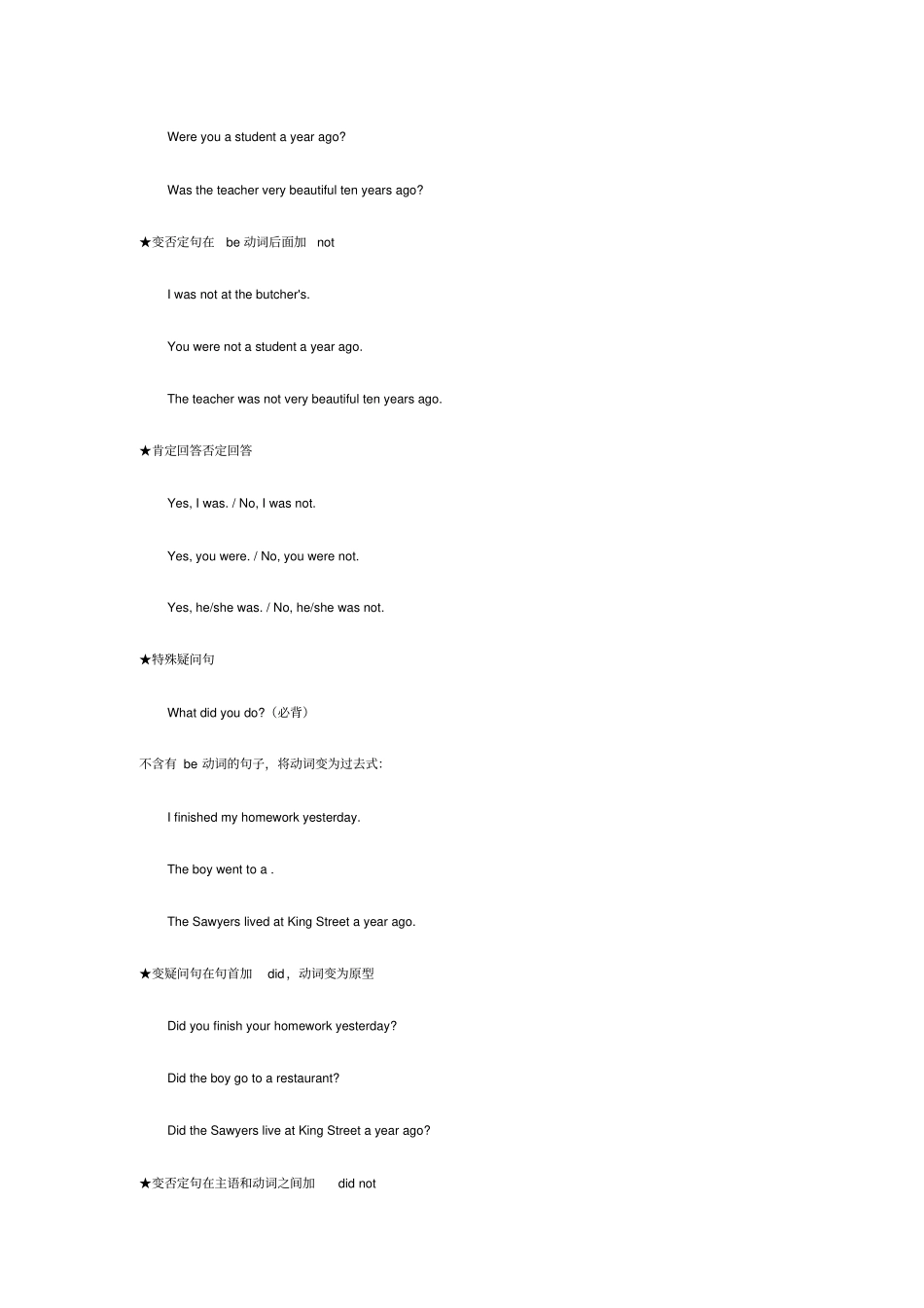新概念英语一册语法总结一.时态:一般现在时,现在进行时,一般过去时,现在完成时,一般将来时,过去进行时,过去完成时,过去将来时1. 一般现在时表示一般性,经常性的动作或一般性事实。■ 含有 be 动词的句子He is a teacher. The girl is very beautiful. Tim and Jack are students. ★变疑问句将be 动词移到句首Is he a teacher? Is the girl very beautiful? Are Tim and Jack students? ★变否定句在be 动词后面加not He is not a teacher. The girl is not very beautiful. Tim and Jack are not students. ★肯定回答及否定回答Yes, he is. No, he is not. Yes, she is. No, she is not. Yes, they are. No, they are not. ■ 不含有 be 动词的句子,即含有一般动词的句子第三人称单数及单数名词He likes books. She likes him. The dog likes bones. ★变疑问句在句首加does, 动词变为原型Does he like books? Does she like him? Does the dog like bones? ★变否定句在主语及动词之间加doesn’t, 动词变为原型He doesn’t like books. She doesn’t like him. The dog doesn’t like bones. ★肯定回答及否定回答:Yes, he does. No, he doesn’t. Yes, she does. No, she doesn’t. Yes, it does. No, it doesn’t. 注意:第三人称单数形式一般在动词后面加S,不要和名词复数混淆,变否定句或疑问句时名词复数没有任何变化。其他人称及复数名词I want to have a bath. We have some meat. The students like smart teachers. ★变疑问句在句首加do Do you want to have a bath? Do we have any meat? Do the students like smart teachers? ★变否定句在主语和动词之间加don’ t. You don’ t want to have a bath. We don’t have any meat. The students don’t like smart teachers. ★肯定回答及否定回答Yes, I do. No, I don’ t. Yes, we do. No, we don’t Yes, they do. No, they don’t. 2. 现在进行时表示现在正在进行的动作。构成:主语+ be 动词+动词的现在分词+其它成分(现在分词的构成见附录)We are having lunch. He is reading a book. The dog is running after a c...


